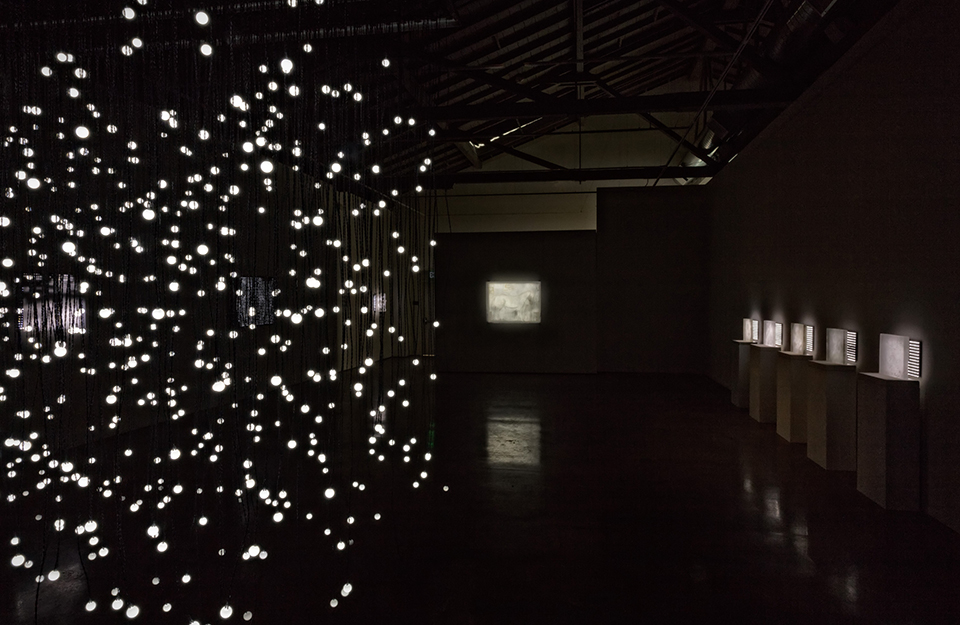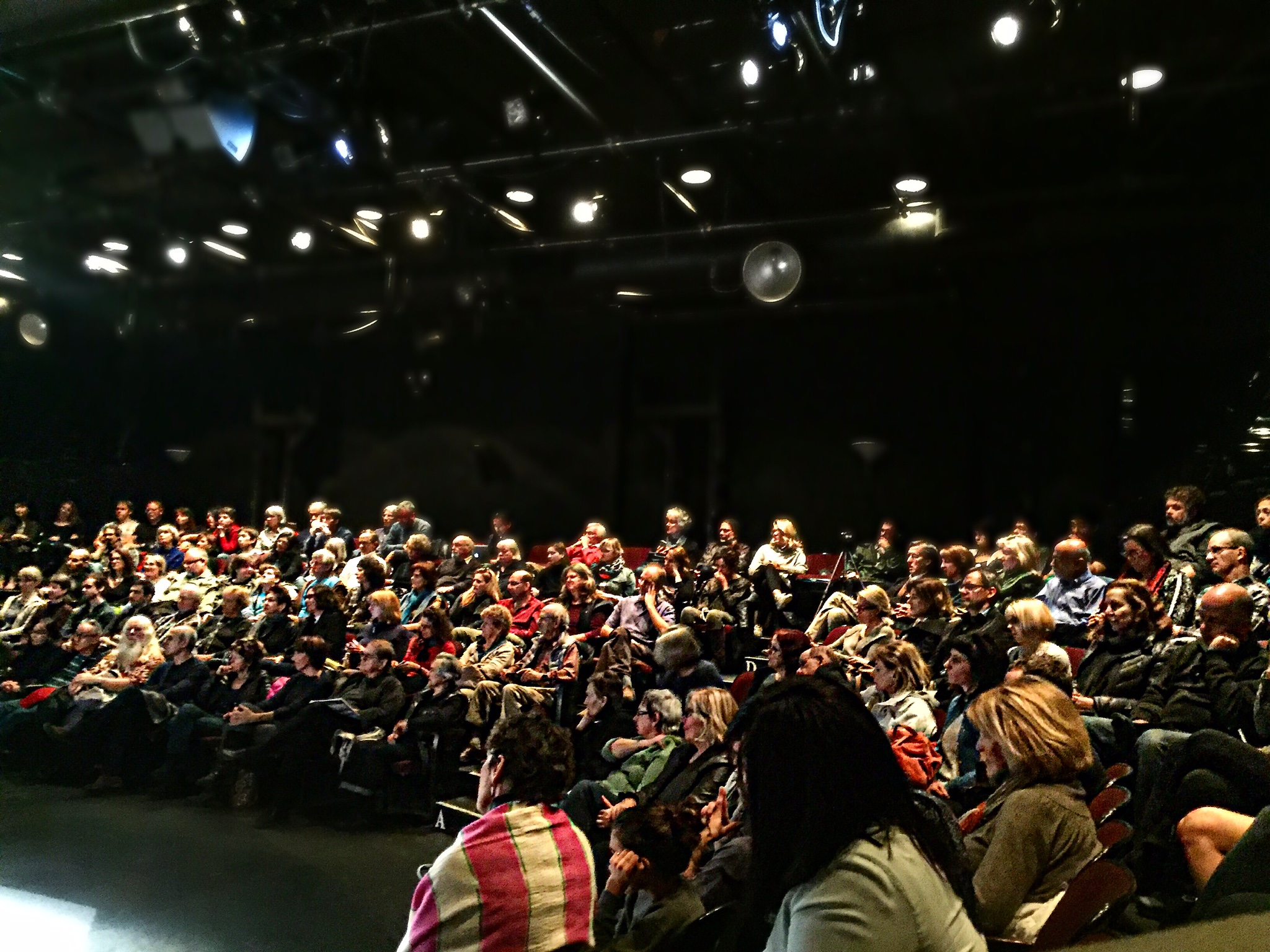
Artist Jim Campbell shifts how we perceive the world with low-resolution imagery
Above: Jim Campbell, ”Home Movies (Pause),” 2015, installation view at San Jose Institute of Contemporary Art. Photo by David Pace.
Sarah Dragovich is the communications and development associate at the San Jose Institute of Contemporary Art, which receives support from Knight Foundation.
“JIM CAMPBELL: New Work and Collaborations With Jane Rosen” at the San Jose Institute of Contemporary Art mesmerizes viewers with glimmering light installations, placing them in the middle of a 360-degree immersive experience. A closer look reveals that the LED installations display mysterious moving images. In a world that is primarily defined by crystal-clear resolution, Campbell, a San Francisco-based artist, uses cutting-edge technology to produce images that are at once recognizable and indistinguishable, providing a challenging counterpoint to the current pursuit of higher and higher definition.
Campbell has had a long career in the Bay Area’s tech industry developing technology that produces the high-definition imagery we see on our daily screens, but his artwork offers the complete opposite, an experience that uses low-resolution imagery. By reducing 2 million-pixel images and video down to 2,000 to 200 pixels, Campbell’s work forces the viewer to slow down and look. He recently explained in an interview: “If you take away all of the details of an image, is there anything useful from an experience of looking at something that is low-resolution? Is there some sort of essence that can be found in taking an image and getting rid of most of the information?” Campbell delivers this effect by using familiar, low-resolution imagery of people swimming, waves crashing, or birds flying, and relies on the viewer’s perception, nostalgia and memory to decipher the piece.

“JIM CAMPBELL New Work and Collaborations with Jane Rosen” exhibition installation views at San Jose Institute of Contemporary Art. Photo by David Pace.
The recognizable movements, shapes, rhythm and light are what Campbell is interested in revealing to the viewer. When in front of “Exploded View (birds),” on view in the exhibition, it takes a moment to recognize that the blinking lights display video footage of birds flying and landing. To address the way Campbell’s low-resolution imagery affects the viewer, we held a panel discussion in early January that explored the psychology and physiology of how we perceive imagery. Inspired by Campbell’s work, the panel addressed the various ways we “see” and how perception and personal histories shape our individual interpretations of visual information.
Campbell discussed his process with Sophie Lebrecht, chief science officer and co-founder of Neon Labs, a company dedicated to researching engaging images online for media; David Stork, Ph.D., a researcher who studies the science behind computer vision and fine art, who addressed how artists such as Campbell and James Turrell interpret reality through the use of light; and Dan Harden, president, CEO and principal designer of Whipsaw Inc., who has dedicated his career to designing products and experiences for major companies. The videotaped discussion, which took place on Jan. 10 and was attended by 200 people, will be available to the public on the Institute of Contemporary Art’s website next week at sjica.org.
In addition, the gallery has been hosting free, guided meditations every Tuesday this month in conjunction with the exhibition to facilitate a culture of slowing down. Bay Area meditation specialists Kim Allen and Jennifer Schroeder, from YogaSource Los Gatos and Palo Alto, have been leading participants through a meditative “tour of the mind and body” among the exhibition’s light installations and then inviting them to look at the work in length afterwards, to explore perception.
“JIM CAMPBELL: New Work and Collaborations with Jane Rosen” is on view through Feb. 7 at the San Jose Institute of Contemporary Art. A free, guided meditation will take place noon to 1 p.m. PT on Tuesday, Jan. 26. For more information, visit sjica.org.

“Perception vs. Reality” audience at the San Jose Institute of Contemporary Art. Photo courtesy San Jose Institute of Contemporary Art.
Recent Content
-
Artsarticle ·
-
Artsarticle ·
-
Artsarticle ·

